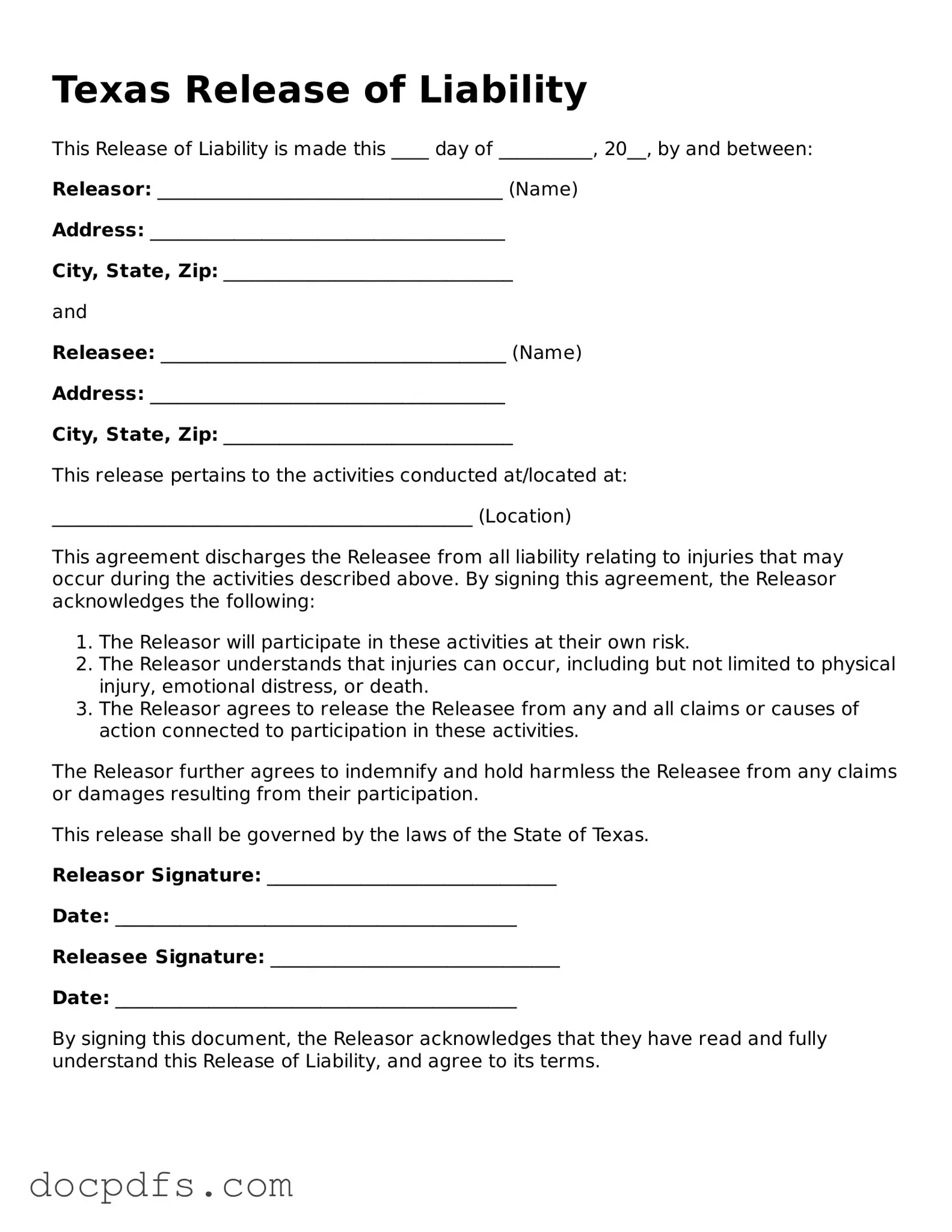A Texas Release of Liability form is a legal document that allows one party to waive their right to hold another party responsible for any injuries or damages that may occur during a specific activity or event. This form is commonly used in situations involving recreational activities, sports events, or other activities where there is a risk of injury. By signing this document, participants acknowledge the risks involved and agree not to pursue legal action against the organizer or provider of the activity.
This form is beneficial for a variety of individuals and organizations, including:
-
Event organizers who host activities like sports tournaments, camps, or workshops.
-
Business owners offering services that involve physical activities, such as gyms, adventure parks, or recreational facilities.
-
Individuals participating in activities where there is a potential for injury, such as hiking, biking, or water sports.
By using this form, parties can help protect themselves from potential lawsuits stemming from accidents or injuries that may occur during the activity.
Yes, a properly executed Release of Liability form is generally considered legally binding in Texas, provided it meets certain requirements. To be enforceable, the form must:
-
Clearly state the risks associated with the activity.
-
Be signed voluntarily by the participant or their legal guardian.
-
Not contain any language that is misleading or ambiguous.
-
Be executed in a manner that complies with Texas law.
It is essential for the form to be clear and understandable to ensure its enforceability.
While a Release of Liability form is generally enforceable, it can be challenged in court under certain circumstances. Factors that may lead to a challenge include:
-
Negligence or misconduct on the part of the party being released.
-
Inadequate disclosure of risks associated with the activity.
-
Coercion or pressure during the signing process.
-
Involvement of minors, as parental consent may not fully protect against liability.
Each case is unique, and the court will evaluate the specific facts and circumstances surrounding the release.
Obtaining a Texas Release of Liability form is relatively straightforward. You can:
-
Download a template from reputable legal websites.
-
Consult with an attorney to draft a custom form that meets your specific needs.
-
Use online legal document preparation services that offer customizable forms.
When selecting a form, ensure it includes all necessary elements to be effective and enforceable in Texas.
